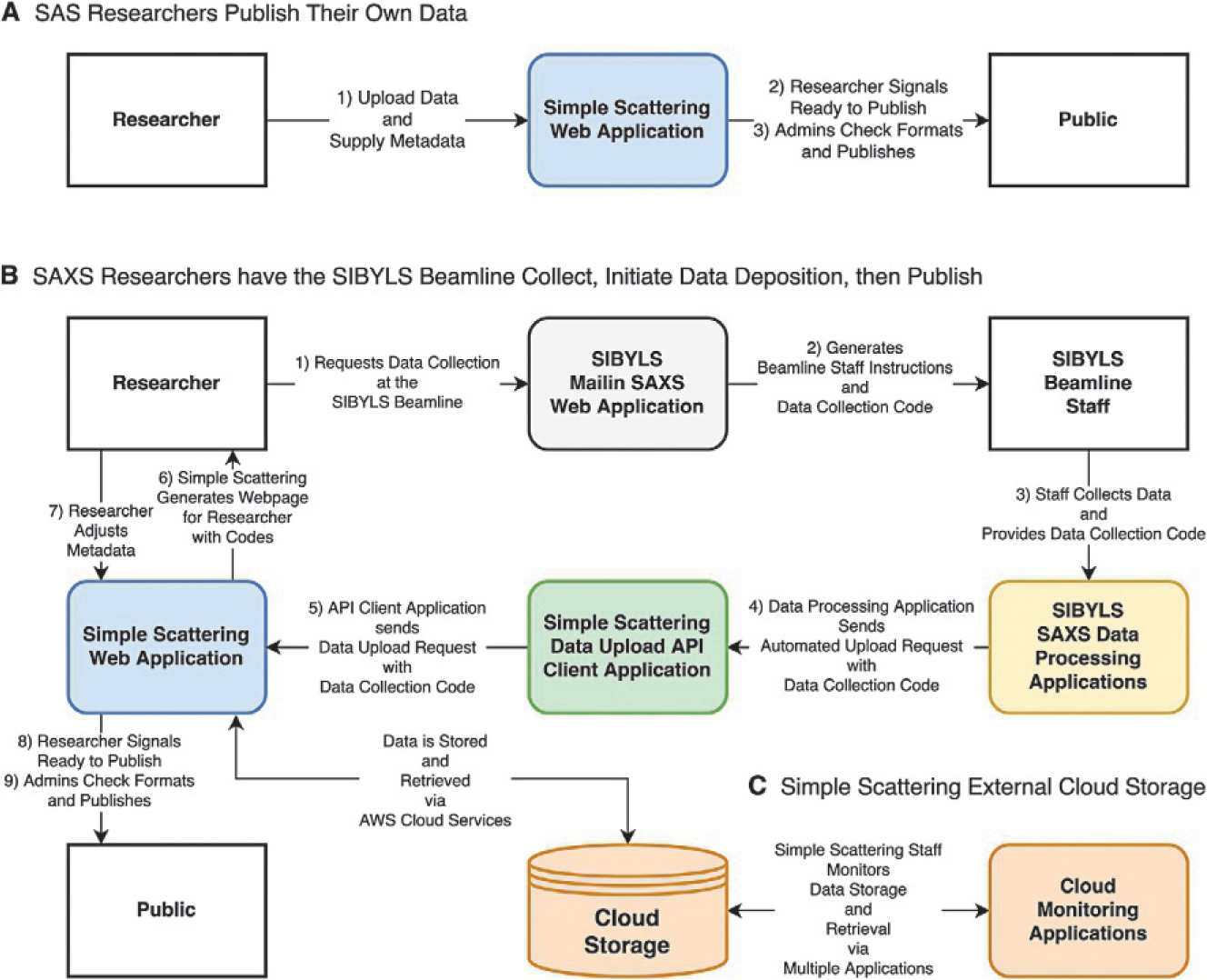Fig. 7.

Workflow for upload of data to Simple Scattering for SIBYLS beamline. (A) Upload and release of data from the Simple Scattering web application. (B) In a more automated pipeline, beamline users first request beamtime through our MailinSAXS site (https://bl1231.als.lbl.gov/htsaxs), which generates instructions and a unique data collection code. Beamline staff then collects data and converts image readouts to individual files that contain the scattering angle, intensities, and errors using in-house data processing applications. These applications can then initiate a data upload request to Simple Scattering on behalf of the user through a data upload API client application. Simple Scattering then generates its unique code for the data set and makes a request to store the data on Amazon Web Services. Upon success, Simple Scattering generates a draft web page for the beamline user, who then adds additional metadata and supplementary files. Upon publishing the data, the web page for the particular data set is made accessible to site visitors, and data can be retrieved from storage and sent to the visitor by clicking a link. (C) Staff monitors cloud storage through AWS cloud monitoring applications.
